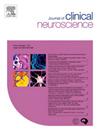肿瘤治疗领域在胶质母细胞瘤的应用和疗效的大型多中心学术实践
IF 1.8
4区 医学
Q3 CLINICAL NEUROLOGY
引用次数: 0
摘要
目的:尽管在一项前瞻性随机试验中,肿瘤治疗场(TTF)作为GBM的标准治疗被纳入NCCN指南,但其采用受到限制。我们试图在现实世界的数据集中描述使用情况,验证疗效,并比较GBM患者TTF后失败的模式。方法选取2014-2023年间新诊断的GBM患者,接受标准分路外束放疗(EBRT)。收集的数据包括切除范围、放疗剂量分割和方式、肿瘤治疗野的利用以及基于影像学表现的进展的存在和位置。Kaplan-Meier (KM)曲线生成无进展生存期和总生存期。评估两组患者/疾病特征与TTF使用的关系。结果共纳入393例患者。74例患者接受TTF治疗(18.8%)。2019年,TTF的使用率增加了10%。从2019年到2023年,TTF的利用率约为20%。EBRT后加入TTF可改善2年OS (58% vs 41%, p <;0.006)。在多变量调整中,TTF的使用仍然与OS的改善相关(p = 0.038)。随着TTF的加入,边际失效增加,现场失效减少(p = 0.099)。结论TTF在GBM治疗中的广泛应用普遍存在犹豫,只有不到四分之一的现代患者接受了TTF。TTF与改善的OS相关,与先前发表的前瞻性临床试验结果一致。我们的研究结果还表明,TTF和EBRT之间可能存在相互作用,影响失败模式,TTF组的现场失败率降低。本文章由计算机程序翻译,如有差异,请以英文原文为准。
Tumor treating fields utilization and efficacy for glioblastoma at a large multicenter academic practice
Purpose
Despite Tumor Treating Fields (TTF) being included in NCCN guidelines as standard treatment for GBM after improving overall survival in a prospective randomized trial, adoption has been limited. We sought to describe utilization, validate the efficacy, and compare patterns of failure after TTF for GBM patients in a real-world dataset.
Methods
We identified patients with newly diagnosed GBM between 2014–2023 who received standard fractionation external beam radiotherapy (EBRT). Data collected included extent of resection, radiotherapy dose fractionation and modality, utilization of tumor treating fields, and presence and location of progression based on radiographic findings. Kaplan-Meier (KM) curves were generated for progression-free and overall survival. Patient/disease characteristics in relation to TTF utilization were evaluated between the two groups.
Results
Three-hundred and ninety-three (393) patients were included in this study. 74 patients were treated with TTF (18.8 %). The adoption of TTF utilization increased in 2019 by 10 %. The rate of TTF utilization was approximately 20 % from 2019 to 2023. 2-year OS was improved with the addition of TTF after EBRT (58 % versus 41 %, p < 0.006). On multivariable adjustment, TTF use remained associated with improved OS (p = 0.038). There was a trend towards increased marginal failures and decreased in-field failures with the addition of TTF (p = 0.099).
Conclusion
Widespread adoption of TTF in the treatment of GBM has been generally met with hesitation with less than one-fourth of modern patients receiving TTF. TTF was associated with improved OS, consistent with previously published prospective clinical trial results. Our results also suggest there may be an interplay between TTF and EBRT, affecting pattern of failure, with decreased rates of in-field failure among the TTF group.
求助全文
通过发布文献求助,成功后即可免费获取论文全文。
去求助
来源期刊

Journal of Clinical Neuroscience
医学-临床神经学
CiteScore
4.50
自引率
0.00%
发文量
402
审稿时长
40 days
期刊介绍:
This International journal, Journal of Clinical Neuroscience, publishes articles on clinical neurosurgery and neurology and the related neurosciences such as neuro-pathology, neuro-radiology, neuro-ophthalmology and neuro-physiology.
The journal has a broad International perspective, and emphasises the advances occurring in Asia, the Pacific Rim region, Europe and North America. The Journal acts as a focus for publication of major clinical and laboratory research, as well as publishing solicited manuscripts on specific subjects from experts, case reports and other information of interest to clinicians working in the clinical neurosciences.
 求助内容:
求助内容: 应助结果提醒方式:
应助结果提醒方式:


